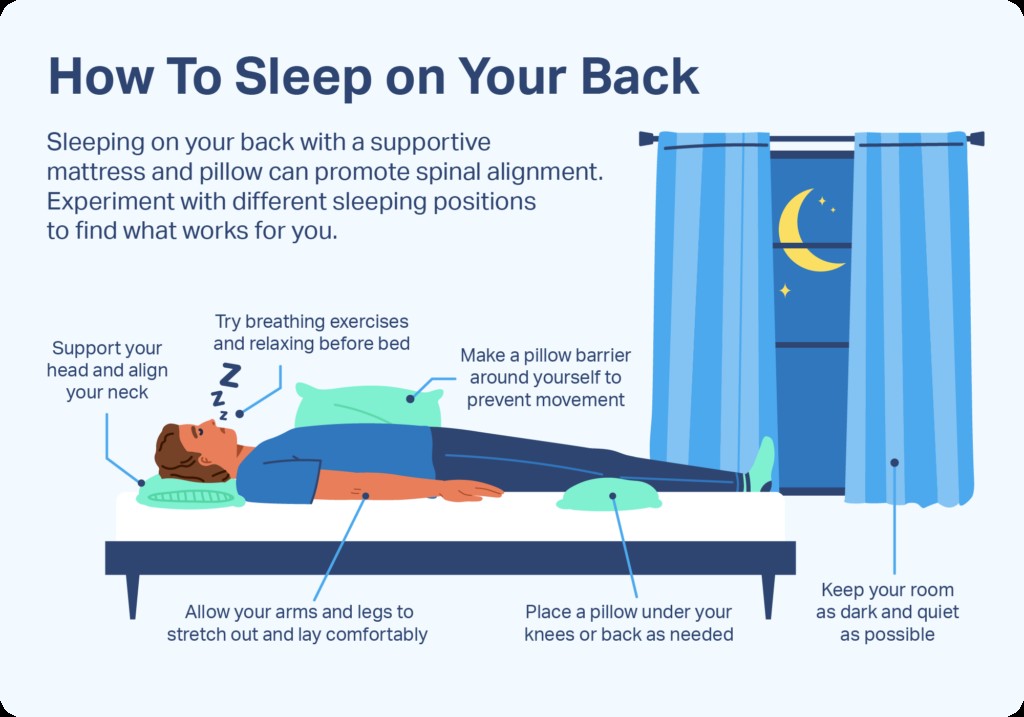Sleeping comfortably and soundly is crucial for overall health and well-being. While personal preferences vary, back sleeping offers several benefits, including improved spinal alignment and reduced risk of wrinkles. If you’re accustomed to sleeping on your side or stomach, transitioning to back sleeping might seem challenging. This article provides practical tips and techniques to help you learn how to sleep on your back and enjoy its potential advantages.
Benefits of Back Sleeping
Sleeping on your back offers several health benefits. It promotes proper spinal alignment, especially when using a supportive mattress and pillow. This can help alleviate back pain and improve posture. Additionally, back sleeping can minimize facial wrinkles as it avoids direct contact between your face and the pillow, reducing pressure and friction. Elevating your head while sleeping on your back can also reduce acid reflux symptoms.
Training Yourself to Sleep on Your Back
Changing ingrained sleep habits takes time and effort. Here are some strategies to help you gradually transition to back sleeping:
Strategic Pillow Placement
-
Under Your Knees: Placing a pillow under your knees provides support to your lower back and helps maintain the natural curvature of your spine. This can significantly improve comfort while sleeping on your back. Experiment with different pillow sizes to find the optimal height for your body.
-
Under Your Lower Back: If you experience lower back discomfort when sleeping on your back, a small pillow placed in the curve of your lower back can provide additional support.
-
Surrounding Your Body: To prevent rolling onto your side or stomach, strategically place pillows around your body. Position pillows along your sides and hips to create a gentle barrier that discourages movement during sleep.
Addressing Discomfort
Back sleeping may initially feel uncomfortable due to an unsupportive mattress or pillow. Consider investing in a mattress specifically designed for back sleepers that offers adequate support and pressure relief. Similarly, choose a pillow that keeps your neck aligned with your spine without causing strain.
When to Reconsider Back Sleeping
While back sleeping offers numerous benefits, it’s not suitable for everyone. Individuals with certain health conditions, such as sleep apnea or severe snoring, should avoid sleeping on their back. This position can exacerbate airway obstruction, leading to breathing difficulties during sleep. Consult with a healthcare professional if you have concerns about whether back sleeping is appropriate for you. As Dr. Gerard Meskill, MD, a Sleep Medicine Physician and Sleep Apnea Expert, explains, “One of the principal factors driving OSA is the retropositioning of the jaw and the relaxation of the tongue that occurs during sleep, which narrows the upper airway. Back sleeping exacerbates this further, leading to more airway collapse.”
Optimizing Your Sleep Environment
Beyond sleep position, several factors contribute to a good night’s rest. Maintain a consistent sleep schedule, establish a relaxing bedtime routine, and create a sleep-conducive environment that is dark, quiet, and cool. Limiting screen time before bed is crucial, as exposure to blue light can interfere with sleep onset.
Conclusion
Learning to sleep on your back can be a worthwhile endeavor, offering potential benefits for your spine, skin, and overall sleep quality. By implementing the strategies outlined in this article and optimizing your sleep environment, you can increase your chances of successfully transitioning to back sleeping and enjoying its numerous advantages. Remember that consistency and patience are key to adapting to a new sleep position.
